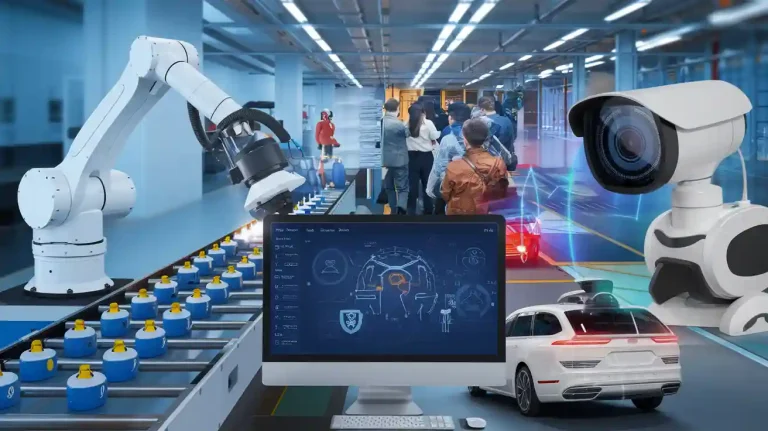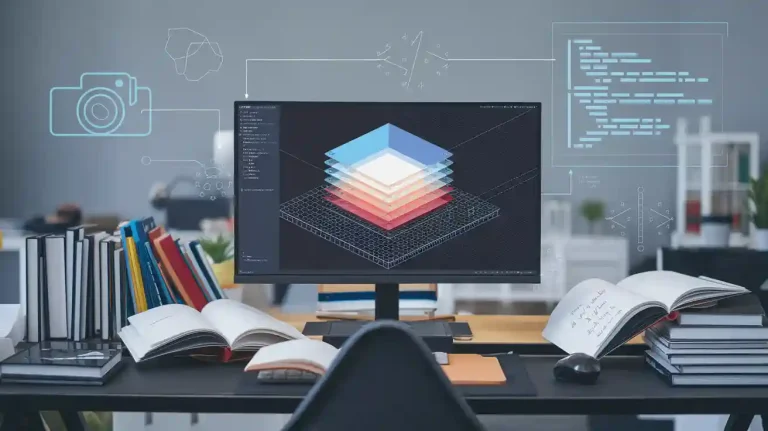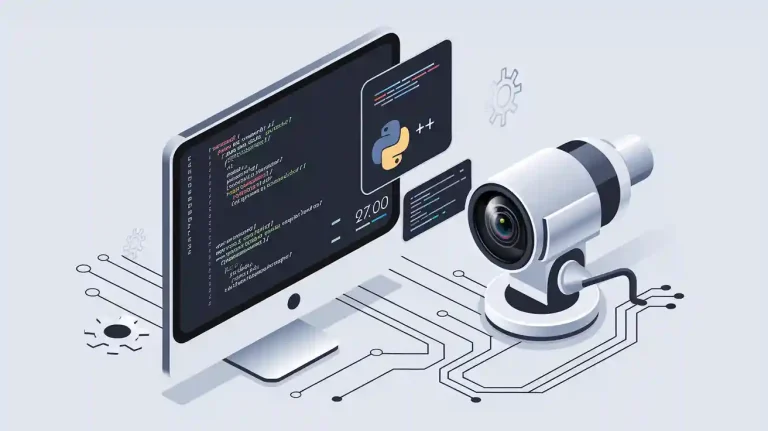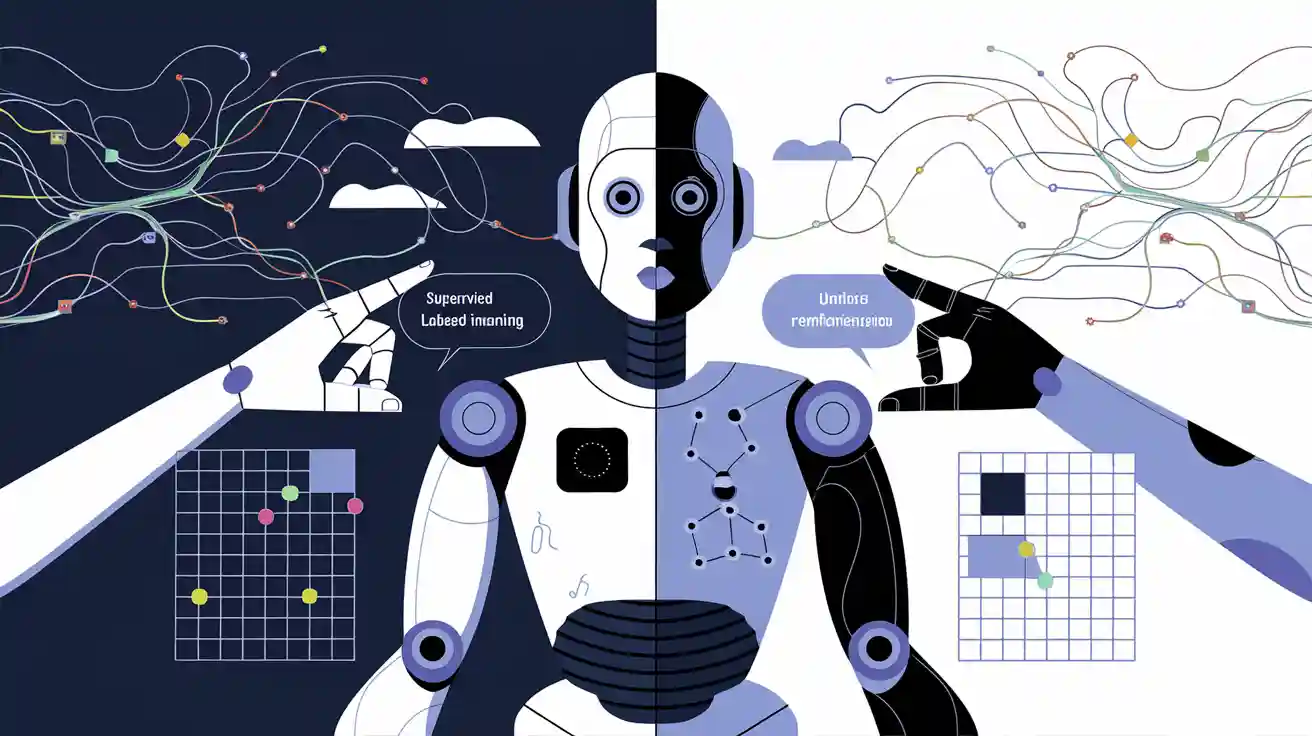
Supervised Learning machine vision system often delivers high accuracy when labeled images exist. Other machine vision methods may use less labeled data but can struggle with precision. Each approach fits different project goals. Selecting the right system affects data requirements, accuracy, and cost. Readers can expect clear, practical insights to help with real-world decisions.
Key Takeaways
- Supervised learning needs many labeled images and delivers high accuracy, making it ideal for tasks like medical diagnosis and product inspection.
- Other methods like unsupervised, semi-supervised, and reinforcement learning use less or no labeled data and fit tasks such as pattern discovery, anomaly detection, and robotics.
- Choosing the right method depends on your data availability, project goals, and whether the system must learn from feedback or interact with its environment.
- Supervised learning requires more time and money for labeling but offers reliable results, while other methods save labeling costs but may need more computing power.
- Matching the machine vision method to your specific needs ensures better accuracy, cost efficiency, and project success.
Supervised Learning Machine Vision System
What Is Supervised Learning?
A Supervised Learning machine vision system uses labeled images to train computer models. Each image in the training set has a known answer, such as the type of object or the presence of a disease. The system learns by comparing its predictions to the correct answers. It then adjusts its rules to improve accuracy. This process repeats many times. The goal is to help the system make correct predictions on new, unseen images.
Supervised Learning machine vision system relies on large sets of labeled data. These labels guide the system during training. The system uses algorithms like decision trees, neural networks, and support vector machines. These tools help the system find patterns in the data. The result is a model that can classify or measure features in images with high accuracy.
Supervised Learning machine vision system stands out for its predictability and reliability. It often matches or even surpasses human experts in certain tasks.
Key Applications
Supervised Learning machine vision system plays a major role in many fields. Some of the most common uses include:
- Medical imaging, such as detecting fractures or measuring knee alignment on X-rays.
- Product inspection in factories, where the system checks for defects or missing parts.
- Object detection, which helps robots or cameras find and identify items in a scene.
- Disease progression prediction, where the system forecasts how a condition might change over time.
- Evaluation of implant positioning and detection of implant loosening in clinical settings.
Doctors use these systems to interpret radiographs and reduce diagnostic errors. Factories rely on them to ensure product quality. The system’s ability to handle both classification and regression tasks makes it very flexible. Its widespread use comes from its strong performance and the trust it builds through accurate results.
Other Machine Vision Methods
Unsupervised Learning
Unsupervised learning finds patterns in data without using labels. The system groups similar images or discovers hidden structures. In machine vision, this method helps with tasks like image segmentation and feature extraction. The system can organize large sets of images by similarity. It does not need any labeled examples. This makes it useful when labeling data is too expensive or time-consuming.
Semi-Supervised and Self-Supervised
Semi-supervised learning uses both labeled and unlabeled images. The system learns from a small set of labeled data and a larger set of unlabeled data. This approach helps when only a few labeled images are available. The system can improve its accuracy by using the extra unlabeled data. Self-supervised learning creates its own labels from the data. The system solves simple tasks, like predicting missing parts of an image. These tasks help the system learn useful features. Self-supervised learning often prepares a model before fine-tuning it with labeled data.
Reinforcement Learning
Reinforcement learning teaches a system through trial and error. The system receives rewards or penalties based on its actions. Over time, it learns to make better decisions. In machine vision, reinforcement learning helps train robots or self-driving cars. The system learns how to respond to sensor data and improve its actions in real time.
Machine vision methods differ in how much labeled data they need and how they learn from it.
| Learning Type | Definition | Typical Use Cases in Machine Vision |
|---|---|---|
| Unsupervised Learning | Discovers patterns in unlabeled data using techniques like clustering and dimension reduction. | Grouping similar images, feature extraction, image segmentation, and identifying patterns without prior labels. |
| Semi-Supervised Learning | Combines labeled and unlabeled data, often generating labels automatically. | Labeling image data where manual annotation is costly, improving model training with limited labeled images. |
| Self-Supervised Learning | Trains models to solve pretext tasks that generate supervisory signals from the data itself. | Learning image representations by predicting parts of images or transformations, useful for pretraining vision models. |
| Reinforcement Learning | Uses trial-and-error feedback with rewards or penalties to improve decision-making over time. | Training autonomous systems like self-driving cars to respond to sensor data and improve driving policies dynamically. |
- Supervised learning needs a large amount of labeled data.
- Unsupervised learning does not need any labeled data.
- Semi-supervised learning uses both labeled and unlabeled data.
- Self-supervised learning creates labels from the data itself and does not need manual labeling.
These methods give teams more options when labeled data is limited or when the project needs flexible learning strategies.
Comparison Overview
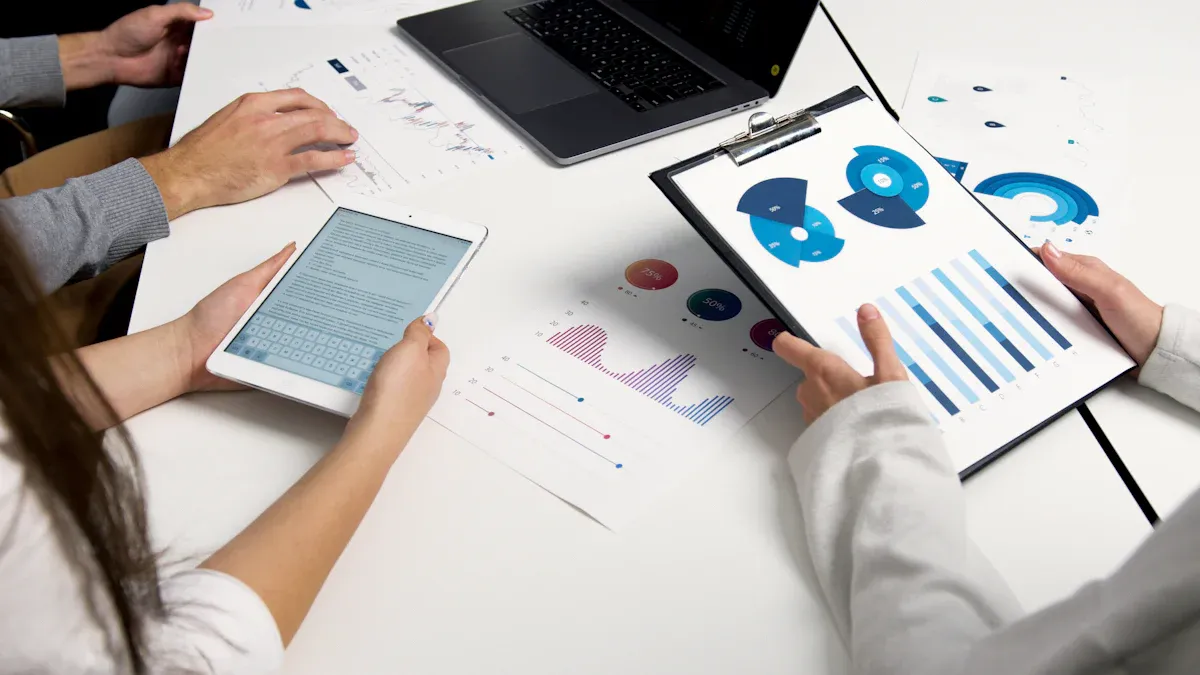
Data Needs
Different machine vision methods require different types of data. A Supervised Learning machine vision system needs a large set of labeled images. Each image must have a correct answer, such as a category or measurement. This process often takes many hours and requires expert knowledge. Annotation errors can reduce model performance, so high-quality labels matter. In contrast, unsupervised learning uses raw, unlabeled data. The system finds patterns or groups on its own, which makes data preparation less demanding. Semi-supervised learning combines a small set of labeled data with a larger set of unlabeled data. This approach works well when labeling is expensive or slow. Reinforcement learning does not use labeled images. Instead, it learns by receiving rewards or penalties for its actions.
Data preparation for supervised learning is more labor-intensive and requires more expertise than other methods.
| Learning Type | Data Needs Description | Typical Use Cases / Notes |
|---|---|---|
| Supervised Learning | Requires fully labeled datasets where each example is tagged with the correct answer. | Suitable for classification and regression problems; needs ground truth labels for training. |
| Unsupervised Learning | Uses unlabeled data; model finds patterns or structure without ground truth labels. | Useful for clustering, anomaly detection, association, and feature extraction where labels are unavailable. |
| Semi-Supervised Learning | Combines a small amount of labeled data with a larger set of unlabeled data. | Effective when labeling is costly/time-consuming, e.g., medical imaging; improves accuracy over unsupervised. |
| Reinforcement Learning | Involves training an agent through rewards and feedback based on actions in an environment. | Focuses on maximizing cumulative rewards; used in robotics, autonomous vehicles, and game environments. |
Accuracy
Supervised Learning machine vision system often achieves high accuracy in tasks like object detection and classification. The system learns from labeled examples, which helps it make reliable predictions. Many industries trust these systems for important jobs, such as medical diagnosis and product inspection. Unsupervised learning usually has lower accuracy for classification tasks because it does not use labels. It works best for finding patterns or grouping similar images. Reinforcement learning does not focus on classification accuracy. Instead, it learns to make good decisions over time, which suits robotics and self-driving cars.
| Learning Type | Accuracy in Object Detection and Classification | Key Characteristics and Advantages | Limitations and Disadvantages | Typical Applications Relevant to Query |
|---|---|---|---|---|
| Supervised Learning | High accuracy due to training on labeled data | Models trained on labeled data; interpretable decision-making; can use pre-trained models to save time | Requires costly labeled data; may struggle with unseen patterns; possible poor generalization | Image classification, object recognition, autonomous vehicles, medical diagnosis |
| Unsupervised Learning | Lower direct accuracy for classification tasks | Works with unlabeled data; discovers hidden patterns and clusters; reduces labeling effort | Difficult to predict model quality without labels; cluster interpretability may be unclear | Clustering, anomaly detection, image segmentation, data exploration |
| Reinforcement Learning | Not straightforward or preferred for simple classification | Learns via trial and error with reward feedback; suited for sequential decision-making and complex tasks | Computationally expensive; time-consuming training; impractical for simple classification | Robotics, game playing, autonomous vehicles, complex decision tasks |
Cost and Complexity
Supervised Learning machine vision system often has higher upfront costs. Teams must spend time and money labeling data. For example, labeling 100,000 images can take 300 to 850 hours and cost $25,000 to $65,000. Cloud infrastructure for simple models costs $150 to $300 per month. Maintenance and support can add $20,000 to $150,000 per year. Unsupervised and reinforcement learning do not need labeled data, which saves money on annotation. However, these methods often need more computational power and longer training times. Complex deep learning models can cost over $10,000 per month in cloud resources.
| Cost Factor | Supervised Learning | Unsupervised / Reinforcement Learning |
|---|---|---|
| Computational Resources | Generally lower computational power needed | Higher computational power required |
| Data Labeling Costs | Significant costs for labeling datasets | No labeling costs (uses unlabeled data) |
| Data Labeling Time (100,000 samples) | 300 to 850 hours | N/A |
| Data Labeling Cost Estimate | $25,000 to $65,000 depending on complexity | N/A |
| Cloud Infrastructure Cost | $150 to $300/month for simple models | $10,000+ per month for complex deep learning |
| Integration Development Time | ~100 development hours (pipeline + APIs) | Similar integration costs expected |
| Maintenance & Support Cost | $20,000 to $150,000 per year | Similar ongoing costs expected |
Supervised learning requires more investment in data labeling, but unsupervised and reinforcement learning need more computing power and longer training.
Use Cases
Supervised Learning machine vision system works well in fields that need high accuracy and clear answers. In healthcare, these systems help doctors detect cancer, classify tumors, and spot neurological disorders. Pharmaceutical companies use them to speed up drug discovery and select clinical trial candidates. Hospitals use machine learning to predict sepsis risk and improve patient care. In transportation, both supervised and unsupervised learning support self-driving cars and traffic management. Customer service chatbots use supervised learning to answer questions quickly and accurately.
Unsupervised learning helps group similar images, find unusual patterns, and segment images. This method works well when labels are not available. Reinforcement learning shines in robotics, game playing, and autonomous vehicles, where systems must learn from experience.
- Healthcare imaging: Supervised learning improves cancer detection and diagnosis.
- Drug discovery: Pharmaceutical companies use machine vision to select trial candidates.
- Transportation: Self-driving cars use both supervised and unsupervised learning for navigation.
- Customer service: Chatbots powered by supervised learning handle many queries.
- Robotics: Reinforcement learning trains robots to make better decisions.
Each method fits different needs. Supervised learning offers high accuracy and reliability. Unsupervised and reinforcement learning provide flexibility and save on labeling costs.
Choosing the Right Approach
When to Use Supervised Learning
A Supervised Learning machine vision system works best when labeled data is available. Teams often choose this method for tasks that need clear answers, such as product inspection or medical image classification. For example, a factory may use it to check if a part is missing from a product. Hospitals rely on it to spot diseases in X-rays. The system learns from examples with known answers, so it can predict results for new images. This approach gives high accuracy and reliable results. It fits projects where mistakes can be costly or dangerous.
Tip: Use a Supervised Learning machine vision system when you need precise results and have enough labeled images.
When to Use Other Methods
Other machine vision methods help when labeled data is hard to get or the task does not need direct predictions. Unsupervised learning finds patterns in data without labels. It works well for grouping similar images or finding unusual items, such as in anomaly detection. Semi-supervised learning helps when there are only a few labeled images but many unlabeled ones. This method improves learning by using both types of data. Self-supervised learning lets the system create its own labels, which helps when manual labeling takes too much time. Reinforcement learning fits tasks where a system must learn from feedback, like teaching a robot to sort objects or a car to drive itself.
The choice depends on three main things: the amount of labeled data, the goal of the task, and if the system needs to interact with its environment. For example, use unsupervised learning for large-scale image analysis where labels do not exist. Use reinforcement learning for robots that must learn from trial and error.
| Scenario | Best Approach | Why It Works Well |
|---|---|---|
| Product inspection | Supervised Learning | Needs high accuracy and labeled examples |
| Anomaly detection | Unsupervised/Semi-supervised | Finds patterns or outliers without many labels |
| Large-scale image analysis | Unsupervised/Self-supervised | Handles lots of data with few or no labels |
| Robotics and self-driving cars | Reinforcement Learning | Learns from feedback and real-world interaction |
Note: The right method depends on your data and project goals. Teams should match the learning method to the problem for the best results.
Supervised learning in machine vision needs labeled data and often gives high accuracy in tasks like medical diagnosis or product inspection. Other methods, such as unsupervised or reinforcement learning, use less labeled data and fit tasks like pattern discovery or robotics. Regulatory standards in healthcare and automotive fields push teams to choose methods that ensure safety and quality. Ethical concerns, including privacy and bias, affect all machine vision approaches. Teams should match the method to their data, accuracy needs, and industry rules for the best results.
FAQ
What is the main difference between supervised and unsupervised learning in machine vision?
Supervised learning uses labeled images to train models. Unsupervised learning does not use labels. The system finds patterns or groups in the data by itself.
Why does supervised learning often give higher accuracy?
Supervised learning uses labeled examples. The model learns from correct answers. This process helps the system make accurate predictions on new images.
When should a team use reinforcement learning in machine vision?
Teams use reinforcement learning when a system must learn from feedback. This method works well for robots or self-driving cars that need to improve actions over time.
Can semi-supervised learning save time and money?
Yes. Semi-supervised learning uses a small set of labeled data and many unlabeled images. This approach reduces labeling costs and speeds up training.
Does supervised learning always need a large dataset?
Supervised learning works best with many labeled images. Small datasets can limit accuracy. Teams often use data augmentation or pre-trained models to help when data is limited.
See Also
Understanding Few-Shot And Active Learning In Machine Vision
Essential Insights On Transfer Learning For Machine Vision
A Deep Dive Into Synthetic Data For Machine Vision







